 Sony’s PSP has been spanning the internet since its release date of 12:00am March 24, 2005. Numerous hacks have been made so far: web browsing, RSS reading, irc client, running code, and now extracting the ISO image of PSP games onto a memory stick. Where is this all going? This gadget freak projects 30 days maximum for a PSP game to be played via memory stick. If you can currently play TiVo shows on your PSP then I don’t see how “copying” games to your memory stick and playing them can be avoided. It’s taken over a month for us to get this far, what will we have the PSP doing in six months, placing VoIP calls from your PSP while powering it by means of a solar power adapter?
Sony’s PSP has been spanning the internet since its release date of 12:00am March 24, 2005. Numerous hacks have been made so far: web browsing, RSS reading, irc client, running code, and now extracting the ISO image of PSP games onto a memory stick. Where is this all going? This gadget freak projects 30 days maximum for a PSP game to be played via memory stick. If you can currently play TiVo shows on your PSP then I don’t see how “copying” games to your memory stick and playing them can be avoided. It’s taken over a month for us to get this far, what will we have the PSP doing in six months, placing VoIP calls from your PSP while powering it by means of a solar power adapter?
Monthly Archives: May 2005
iAudio 5 Player
With the above in mind, I first tried the iAudio 5 player. The memory capacity comes in 256 MB, 512 MB, and 1 GB. The unit I evaluated had 512 mb of memory, sported an aqua blue color, and retails for $149. The 256 MB unit is available for $129, and the 1 GB for $169. JetAudio manufactures several different players, and is predominately involved in the flash based music player sector. The blue color refers to the metal on the back of the unit only. JetAudio recently changed their name in America to reflect their parent company in Korea, and are now known as Cowon America.
What’s In The Box
The package includes the following:
-iAudio 5 player
-earphones
-AAA battery (Duracell)
-fashion necklace string
-installation CD
-manual
-clearness carrying case
-simple USB connector
-USB 2.0 cable
-line-in recording cable
The iAudio 5 player itself is attractive and finely crafted. It is small (3.02 x 1.38 x 0.71 inches), and weighs just under an ounce without the battery. The top of the device has line-in and earphone jacks for standard mini RCA audio connections. The bottom has the USB connector with a tethered cover, and the battery door. I award kudos to JetAudio for attaching both, and for making them nearly impossible to lose. The front features the LCD display, microphone, and no buttons. The left side has a toggle switch to control volume, and menus. The right side has the remainder of the controls including another toggle for play, stop, fast forward, rewind, and switches for mode, record, and hold. The mode button toggles between MP3 player, FM radio, voice recorder, and line in recording modes. The hold button locks the device to whatever it is doing. This is useful during active sports to keep the music playing without worrying that a button press will interrupt the tunes.
Features In Use
The unit is powered by a single AAA battery. The manufacturer states that it has a 20 hour life. My testing puts it closer to 12 to 14 hours. It is great to have a device use a standard battery. It means you won’t have to send it back for a $99 battery change like the iPod, and on vacation you don’t have to bring any special charger. You can run it off a NIMH rechargeable battery, and there is even a menu choice to calibrate the device for that type of battery to maximize its life.
The music formats supported are more than most other players, and I commend JetAudio for such broad, open support. First, it plays MP3s from 8 to 320 Kbps, including both constant bit rate and the less common variable bit rate varieties. It also plays WAV files, although with these capacities, I doubt anyone will use this mode (you would not have enough room for one full CD of music). Furthermore, the iAudio 5 plays WMA (Windows Media Audio) files of both constant bit rate (5 to 320 Kbps), and variable bit rate (48 to 256 Kbps). It also supports OGG (Ogg Vorbis) files, up to a quality setting of 10. If the preceding has your head swimming, than the “take home message” is that it will play most standard PC music files. Unfortunately, it does not play AAC (Audio Associated Codec) files which is the format for downloads from the iTunes store (at the time of writing, only iPods support this format). Also, it does not support any lossless format, which while not currently popular, is likely to gain some momentum over time. However, the player still supports more formats than most others currently on the market. The device is firmware upgradeable so there is the possibility of adding support for new formats; however, there was no upgrade available presently for this model on the JetAudio web site, and it was tested using firmware 1.10 which came installed.
The LCD is a 128 x 64 pixel full graphic display. The standout feature is the color of the display. The display is not an LCD color display, but rather a monochrome LCD that gets illuminated from a series of LEDs that give it a rich color. The display is capable of “thousands of colors;” it is able to do the entire rainbow. You can even custom mix a color and tell the unit to display it for a certain function (FM radio, for example). The display goes dark after a few seconds to save battery life. If looking to impress your friends, then the display can be toggled to on, and a choice of 2 themes chosen. Next thing you know, the colors are changing with the beat. To impress even further, you can load a custom logo for starting up.
 The display has more information compacted into an area smaller than the score card in the program at a baseball doubleheader. When the unit is in the case without the backlight on it is very difficult to read the display, unless in direct sunlight. Pressing any button fires up the backlight and allows those without reading glasses to find a wealth of info. The left hand side has a pixel display, and the right side has dedicated displays. The left side shows the name of the track, the album, and group name. In addition, a bar displays progress of the song. It also shows the KHz and kbps numbers. Finally, there is a teeny equalizer with the name of the settings. The right hand side displays the track number, the time into the track numerically, a battery life indicator, a volume indicator, a play mode indicator, and a “spinning” disc, and left and right channel bars. This is more information than most home stereos display in far less space, however I would prefer a little less information, in a larger, more readable, format.
The display has more information compacted into an area smaller than the score card in the program at a baseball doubleheader. When the unit is in the case without the backlight on it is very difficult to read the display, unless in direct sunlight. Pressing any button fires up the backlight and allows those without reading glasses to find a wealth of info. The left hand side has a pixel display, and the right side has dedicated displays. The left side shows the name of the track, the album, and group name. In addition, a bar displays progress of the song. It also shows the KHz and kbps numbers. Finally, there is a teeny equalizer with the name of the settings. The right hand side displays the track number, the time into the track numerically, a battery life indicator, a volume indicator, a play mode indicator, and a “spinning” disc, and left and right channel bars. This is more information than most home stereos display in far less space, however I would prefer a little less information, in a larger, more readable, format.
The iAudio 5 connects over a USB 2.0 interface. The unit connects to a “simple USB connector,” and then to the included cable to connect to the computer. The fast read and write speeds are consistent with a 2.0 USB connection. It takes roughly 5 minutes to fill the 512 MB with music (129 MP3s, for the record) and can be done with the unit off. The MP3s can be placed in the music folder on the player; no software is required to be installed on the computer.
The player, while very small and light, still has to be carried somehow. The choices are the included fashion necklace string, or the clear carrying case. The case is designed to allow visibility to the LCD, and to protect the player from moisture. There are cutouts for the controls, and headphone jack. However, with the cutouts, if caught in the rain, the player will get wet while in the case.
The iAudio 5 also includes the ability to record sound via the built in microphone, FM radio, or the line-in jack. For such a compact device this is a lot of power and flexibility. The recordings are stored in WAV or MP3 formats, and get saved into a file on the flash drive. In my tests, I found that voice spoken right in front of the player sounded pretty good, but television from a few feet away could not be heard on playback. Therefore, this is adequate for a quick voice memo, but not for recording a lecture or much else.
The included headphones from iAudio are an earbud design with a white color. They have a strong mid-range sound, but lack high end performance, and low end punch. Unfortunately, MP3s are generally lacking in upper and lower frequencies, and the headphones accentuate these deficits further. Even with the bass boost, and separate Mach 3 Bass, the bass was still anemic with the included earbuds. With the Sony headphones, or the tested speakers, I obtained a fuller frequency response. The iAudio 5 sound system offers more features than any HSN special deal of the day. Additional filters include MP3 enhancer which gives it a fuller, brighter sound. Also, 3D surround sound can be dialed in along 10 incremental settings. Pan to boost left or right channels (rather useless), and play speed settings (equally useless) serve to round out the features. The play speed settings are useless because the pitch is not held constant as in dedicated digital voice units, so voice can be listened to at a faster speed, but still sound like the same voice. If that wasn’t enough post processing, there is a 5 band equalizer with presets for normal, rock, classical, jazz, vocal, and even one user defined. In addition, each of these effects can be applied while listening so you can hear what the effect is doing and optimize it to your listening taste.
 The FM radio is a nice added feature when you’re done listening to all your MP3s. It tunes in available stations clearly, and can scan for broadcasting frequencies (in 0.1 increments, although in the US the stations go by 0.2 and end in all-odd numbers). In addition you can record directly off the radio to the internal flash memory for that song you want to hear again and again.
The FM radio is a nice added feature when you’re done listening to all your MP3s. It tunes in available stations clearly, and can scan for broadcasting frequencies (in 0.1 increments, although in the US the stations go by 0.2 and end in all-odd numbers). In addition you can record directly off the radio to the internal flash memory for that song you want to hear again and again.
http://www.livedigitally.com/wp-content/iaudiophoneBIG.jpg” target=”_new”>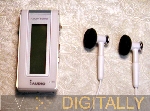 Indeed, any device that is so small, with so many features can only achieve this with some trade-offs. The iAudio 5 is no exception. For starters, there are too many ways to boost the bass: through the equalizer, the BBE, and the Mach 3 Bass. At least one could be eliminated to simplify adjustments. The manual does not explain many of the features and only has 20 pages in each language and left me wanting for more. There is a learning curve to navigating around comfortably using the two toggle switches, but I was comfortable after about 2 days. The buttons are on the smaller side, and users with larger fingers may have some difficulty. Speaking of smaller, the info on the display is very small as well. I was frustrated that I could not build playlists from the device. Also, there is no removable storage slot to expand the memory so I recommend you buy the larger 512 MB or 1 GB model. The player takes several seconds to start up, or shut down, which delays the start of the music. Audiophiles (as with just about all players they buy) will want to upgrade the headphones to a better model.
Indeed, any device that is so small, with so many features can only achieve this with some trade-offs. The iAudio 5 is no exception. For starters, there are too many ways to boost the bass: through the equalizer, the BBE, and the Mach 3 Bass. At least one could be eliminated to simplify adjustments. The manual does not explain many of the features and only has 20 pages in each language and left me wanting for more. There is a learning curve to navigating around comfortably using the two toggle switches, but I was comfortable after about 2 days. The buttons are on the smaller side, and users with larger fingers may have some difficulty. Speaking of smaller, the info on the display is very small as well. I was frustrated that I could not build playlists from the device. Also, there is no removable storage slot to expand the memory so I recommend you buy the larger 512 MB or 1 GB model. The player takes several seconds to start up, or shut down, which delays the start of the music. Audiophiles (as with just about all players they buy) will want to upgrade the headphones to a better model.
Conclusion
The iAudio 5 is a very stylish music player, with enough features to keep even advanced users satisfied for some time. The colorful display is clearly the standout feature. The use of a common AAA battery for power minimizes down time. The FM tuner means you never run out of new music during long layovers at the airport. The variety of recording modes and options extends the possibilities and usefulness of the device to a variety of applications. The number of supported file formats for playback complements these options. I envision this device for the young executive who likes to exercise with music, and travel without being weighed down with a heavier device. With all these possibilities, I’m sure they’ll find something worth listening to. For the extra dough, you can have something that is far more exclusive and feature rich than just another iPod Shuffle. When your friends see the multiple color display they’ll know why you chose the iAudio 5 and will be envious.
Strengths
-standard AAA battery
-broad file format support (MP3, wav, ogg, and WMA)
-microphone and line in recording
-color display
-FM radio that can be recorded from
-fast transfer times
-very light and compact
-accessories included: case and necklace
-equalizer and bass boost
-MP3 enhancer enriches sound
Weaknesses
-small text size on display
-battery life shorter than claimed
-no AAC file support
-microphone can only record nearby voice
-ear buds merely adequate, lack bass
-small buttons and switches
-manual doesn’t explain many features, too short
-no removable storage option
-several seconds to start up and shut down
-no way to enable back light to see name of song only
Only One OS? HA!
 Many people have just one OS (Operating System) on their computers these days. Hardcore geekazoids like myself, may have more than one, but only one can be run at the same time. Switching from Windows XP Pro to Windows 2000, and then to Red Hat Linux 9.0 prove to be a bit of a pain. The pro to multiple operating systems in my opinion are the applications. My AutoCad release runs on Win 2000, Red Hat Linux has tons of free software, and Windows XP keeps me up to date with the rest of the world.
Many people have just one OS (Operating System) on their computers these days. Hardcore geekazoids like myself, may have more than one, but only one can be run at the same time. Switching from Windows XP Pro to Windows 2000, and then to Red Hat Linux 9.0 prove to be a bit of a pain. The pro to multiple operating systems in my opinion are the applications. My AutoCad release runs on Win 2000, Red Hat Linux has tons of free software, and Windows XP keeps me up to date with the rest of the world.
XenSource makes a product called the Xen hypervisor, which allows a computer to run more than one OS at a time. It supposedly is “a very thin layer of software that essentially presents to the operating system an idealized hardware abstraction”. I’d love to get my greasy little hands on this hypervisor! Expected due dates are set somewhere along the lines of 2010.
T-Mobile Topps ‘em All
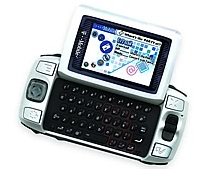 And the winner, with 744 points, coming in a total of 7 points above the second place: Teeee Mooooobiiilleeee.
And the winner, with 744 points, coming in a total of 7 points above the second place: Teeee Mooooobiiilleeee.
T-mobile (I have no idea what the T stands for) has come out on top according to J.D. Power and Associates. We’re talking billing, promotions, customer service, and cost, are just that much nicer on the T side of things. Cingular raked in 711, Sprint PCS a 709 and Nextel dropped in with 704 overall points. This is all good news to yours truly considering I have been with Sprint and Nextel, the two losers of today’s competition results. It’s good to know that my sidekick is a winner this time!
Flexible Speaker
In the 80’s you needed a big boom box to carry on your shoulder, bumping your favorite tune as loud as you could. Soon, the new boom box might just be a patch on your shoulder. A Korean research firm has developed a technology to mass produce sound speakers that are as flexible as fabric.

Speakers will never look the same again. In fact, we may never see another speaker, in the traditional sense, if this takes off. Just weave your speaker into your sweater and have a blast.
Transmitting Sirius-ly
I ‘ve had the Sirius Sportster Satellite Radio for about 2 weeks now. In this time I have installed, listened, and enjoyed. The first week of Sirius radio entertainment was channeled to my audio amplifier via a line-in stereo jack which plugs into the rear of my car stereo. Since this feature is not available on every car stereo, Sirius has built in an FM transmitter. For the second week of my Sirius experience I restricted myself to the FM transmitter of the Sirius Sportster.
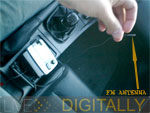 The handset transmits an FM signal, chosen by the user, and fed through a wire antenna, in hopes of your car stereo picking up the signal. My limited iPod experiences with Monster Cable and Griffin FM modulators have not been satisfactory. Therefore, I did not expect much from Sirius.
The handset transmits an FM signal, chosen by the user, and fed through a wire antenna, in hopes of your car stereo picking up the signal. My limited iPod experiences with Monster Cable and Griffin FM modulators have not been satisfactory. Therefore, I did not expect much from Sirius.
Upon FM setup, I dialed into 88.7 both on the Sportster and my car FM radio. The sound came through with no interruptions, and the sound quality was higher than my initial low expectation. I wasn’t impressed just yet, could the Sportster maintain a nice strong signal throughout a day of San Francisco driving?
The FM transmitter has a very broad range of frequencies, opposed to some modulators which are limited to the low 80’s or 90’s. I found the best frequency to be 90.9 FM for city driving.
I drove the ups and downs of the city of San Francisco for half of the day listening to Jazz, news, weather in New York, Bjork, Jack Johnson, and Ludacris. After a few hours of jammin’ FM style I switched over to the original set up of the Siruis line-out to aux input. There was a very noticeable difference in sound quality. The FM transmission seems to lose the richness of the low frequency sound.
Here’s a quick video of me cruising the streets of San Francisco with the Sirius Sportster blasting.
Results:
Using the FM modulator works well, but not as solid as the aux input.
The Sirius radio is a definite plus for any driving experience.
Radio Frequency, Please Identify Yourself
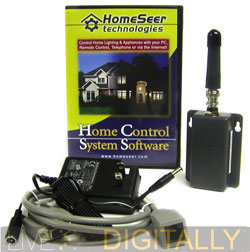
The laser was invented in 1958, but CD players, laser pointers, and hair removal took a few decades before the laser was implemented into these world changing inventions. RFID (Radio Frequency Identification) is not on the exact same timeline, but there are global impacting inventions popping up with the RFID technology.
Continue reading
Radio Frequency, Please Identify Yourself Pt. II
Technology such as this can be implemented in just about any scenario I can think of, so I asked Monahan to think of some ideas for me.
I think the transmitters will continue to get smaller, so the number of uses
and applications can be expanded. I think there is a market for traffic
control, service businesses (such as automobile) so they can greet their
Customers, and track when and how long a car was in for service. I also
think the Hospital Market has huge potential for tracking assets.We already have interest from companies to track employees and have
integrated access control with RFID to protect laptops from being removed
from property unless it is with a properly tagged owner. Mustering is
another great application where in the event of an emergency, employees must
evacuate to a safe area and log in. RFID is perfect for performing a “head
count”.
I was curious, how fool proof is this system. If I were to damage a RFID transmitter, how would the system respond? “Each RFID tag has a Tamper Switch built in that when violated can be programmed to transmit alarm bursts and then render the tag inoperative.”
The units are accessible over the internet or a local network, if deactivation or reprogramming is needed remotely.
I personally don’t have kids, a garage, or a want for internetrestriction, but I have a huge need for a system like this integrated into my life. First thing I’d do is RFID my car and program an alarm sound so I don’t get caught parking in the way of the weekly street sweeper. The RFID system would have paid for itself on that single implementation!
Bike Messengers
Back in the day, before fax machines, you used to have to send a messenger boy out every time you wanted to get some paper from point A to point B. Today, fax machines aren’t even needed. Just send a gig of data over a broadband Internet connection and bamm. Job done.
The Associated Press wrote a great story today about what that spells out for bike messengers. In our own words here at LD, we would now call bike messengers Janky. They simply aren’t needed the way they used to be. Sure, I like Puck too, but I don’t trust him as much as WiFi.
Things to Buy in the Future
If I were a bad blogger, I’d keep the Nanofactory Product Catalog a secret. I could probably milk another 5-10 posts from this baby. Although some of the “products” are speculative, like solar powered lawn grass, they are all the kinds of ideas that make you go hmmm.

Many of the product descriptions assume a post-nanofactory fictional history, but the site assures us that its technical consultant, Chris Phoenix of the Center for Responsible Nanotechnology, has put great effort into making all product descriptions fall within the plausible capabilities of theoretical molecular manufacturing. This includes a biomass food machine. Any kind of biomass goes in, and tasty food comes out.
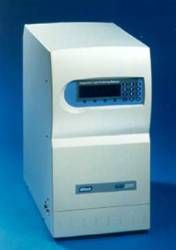
Not all the ideas are pure speculation though. Some are labeled “in development” and make you smile about the bright future with bite sized gadgets that can do it all.
The Smart Car Is Comming.

If you are looking for an eco friendly alternative to the Mini or Prius, here may lie your solution. The Smart Car, currently zipping through streets in Europe for the past seven years, is going to be imported into the US by a small Santa Clara Ca. Company, Zap. When I was in Switzerland a few years back, I remember seeing this zooming throught the narrow streets, delivering pizzas or transporting people around.
The Zap is 8 feet 2 inches long, or slightly more than half the length of the Prius, and at 1,588 pounds, it is nearly 40 percent lighter than the Mini Cooper. The three-cylinder car appeals to urban dwellers who need to squeeze into small parking spaces and like the stylish colors.
The customizable car will be sold with door panels in a variety of colors that can be switched “within the time it takes to drink a latte,” Campbell said.
In its current form, the Smart could be sold in 45 states, but not in California and four others that adhere to the nation’s toughest emissions standards.
“The European version of the car is rated to get 60 miles per gallon. However, to meet the tougher U.S. emissions standards, the car received an initial Environmental Protection Agency rating of just 37 mpg. He said the company’s internal tests indicate that the modified car should get at least 50 mpg, so it has asked the EPA for a retest.
Nevertheless, it remains to be seen if this small, reletively unsafe car, will be sucessfull in the states, for its been loosing money in Europe for a few years now.
Shopping Carts That Think
In the Stone Age grocery shopping was an analog task. You wrote down your shopping list, perhaps with something as quaint as a pencil. Traveled to the store, hopefully everything was refrigerated and after getting all your items you would call it a day.
Now there is a new way to shop. IBM and Springboard Retail Networks are each working on their own version of a computerized shopping cart. The cart can guide you through the aisles using a GPS like map. It won’t count your calories, but it can ring you up, making the grocery store a one-stop hassle free encounter. You’ll never get lost looking for pickles again, the cart will take you to them, just like you were on a treasure hunt.
But, seeing as how it will cost a store 160,000 to get fully equipped with the smart shopping carts, I have a feeling we won’t be seeing them at Costco anytime soon.
